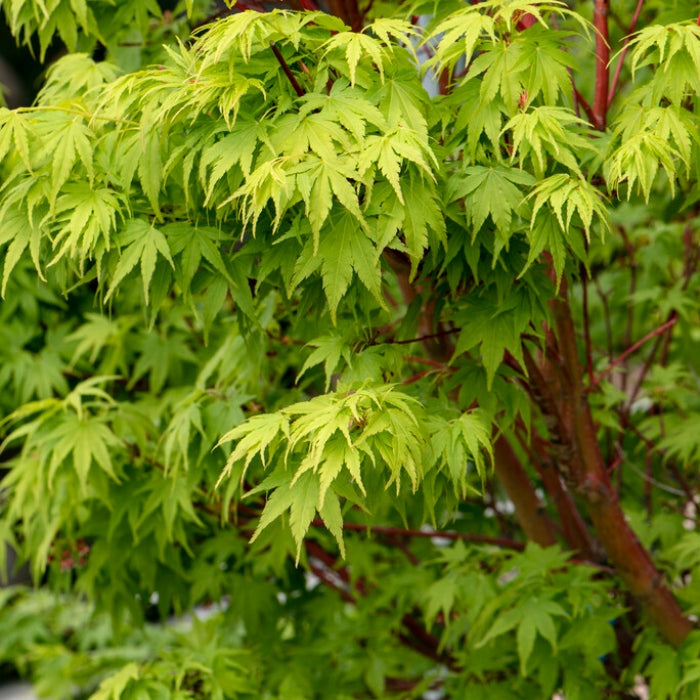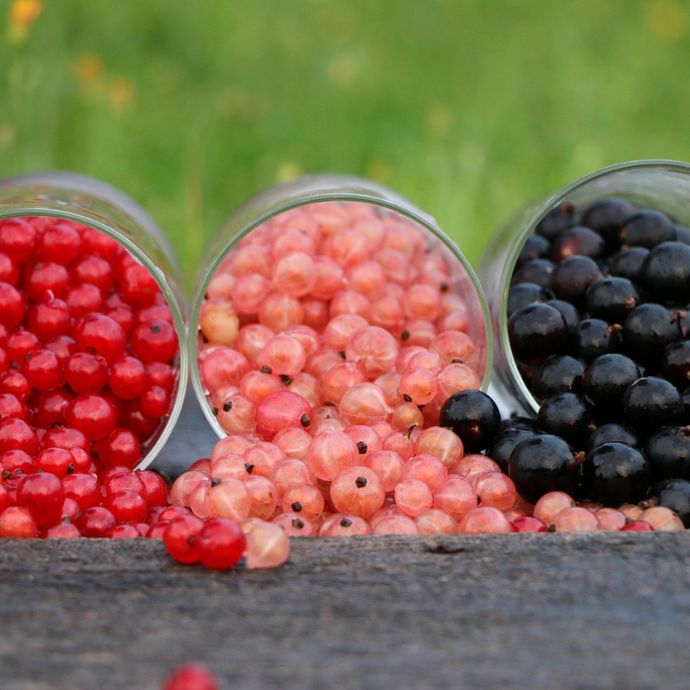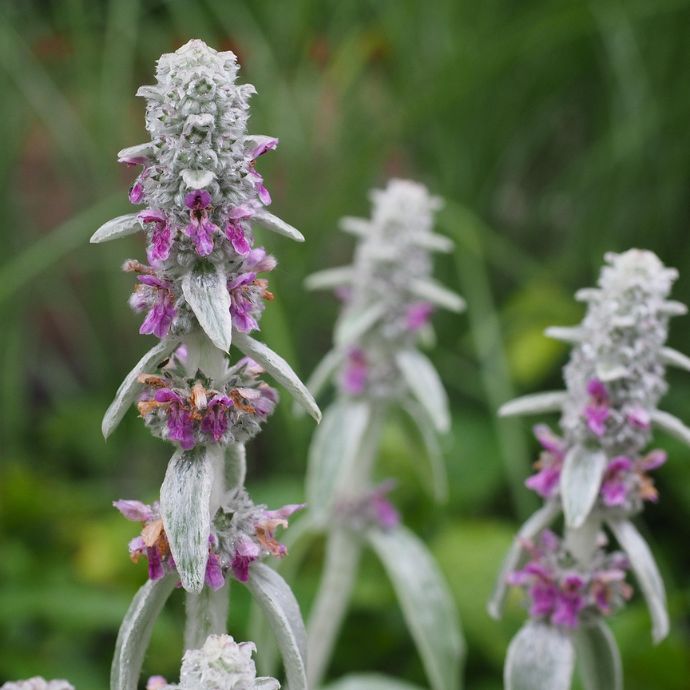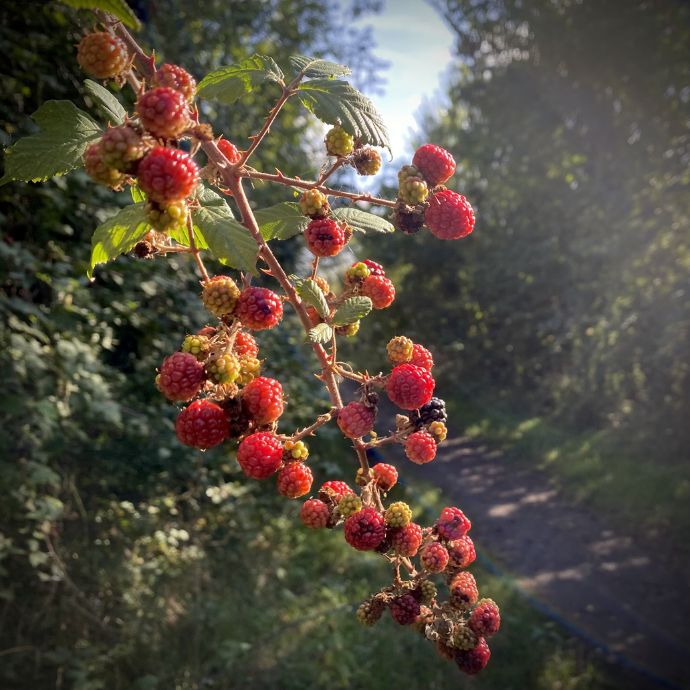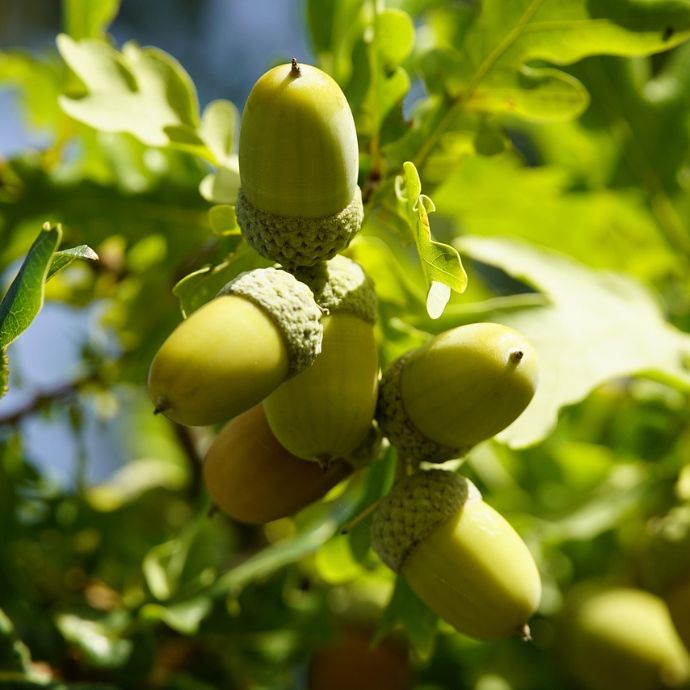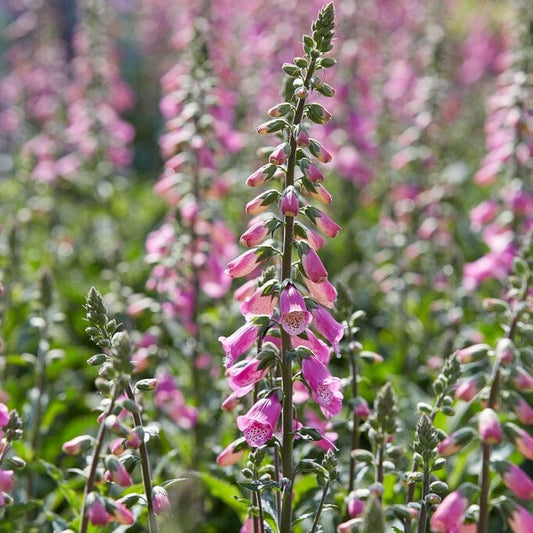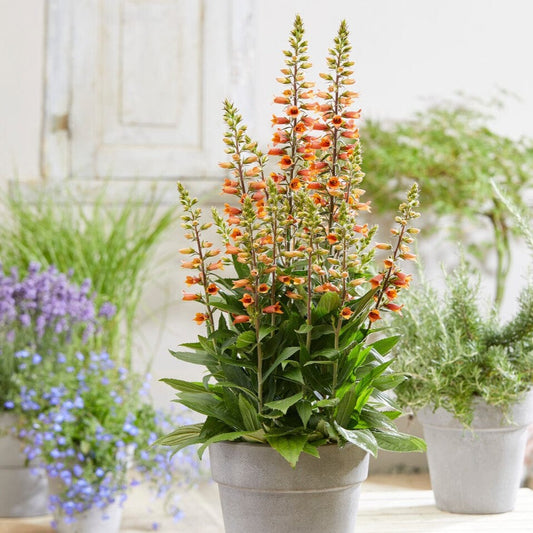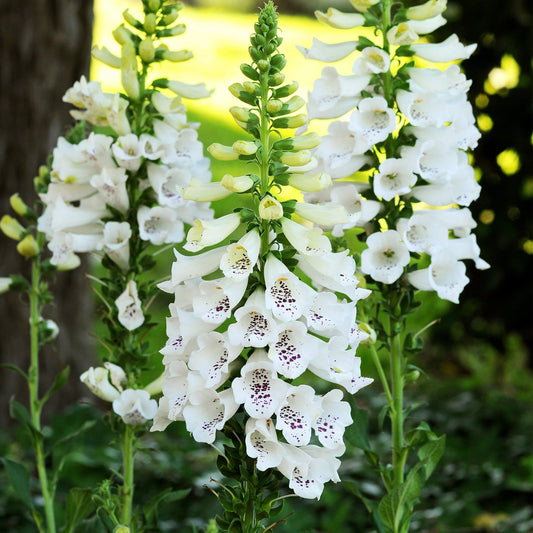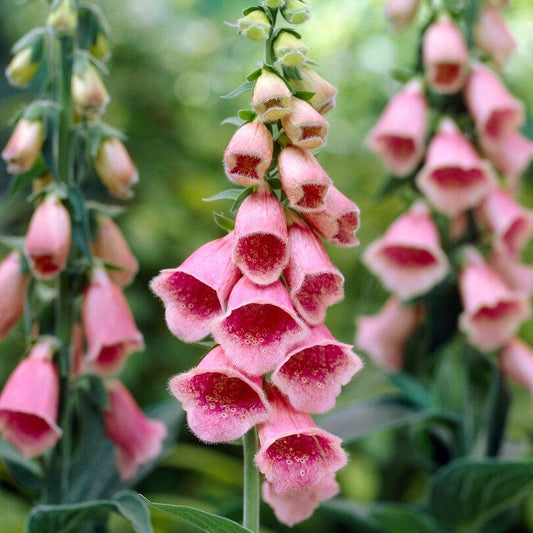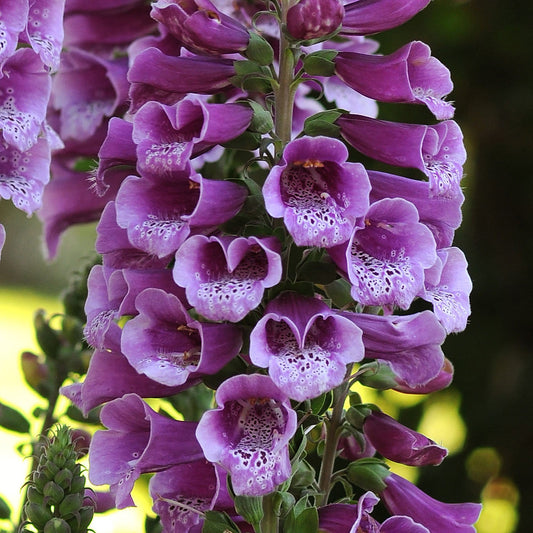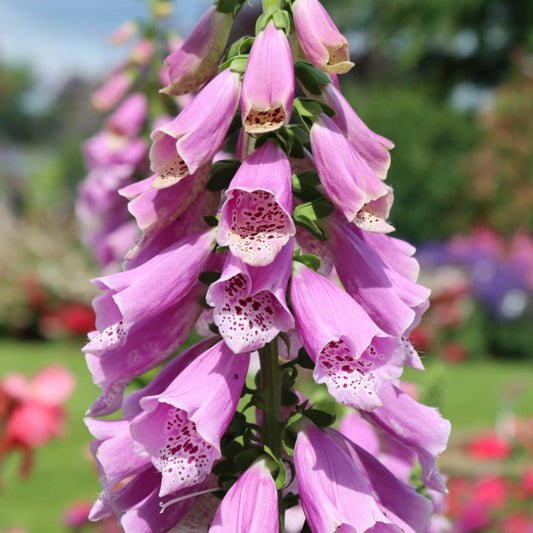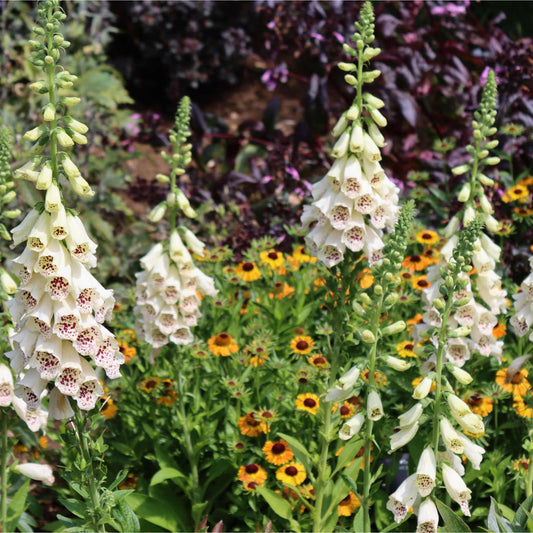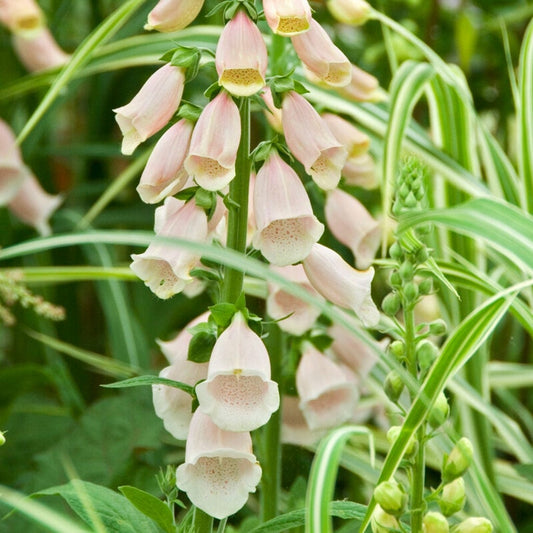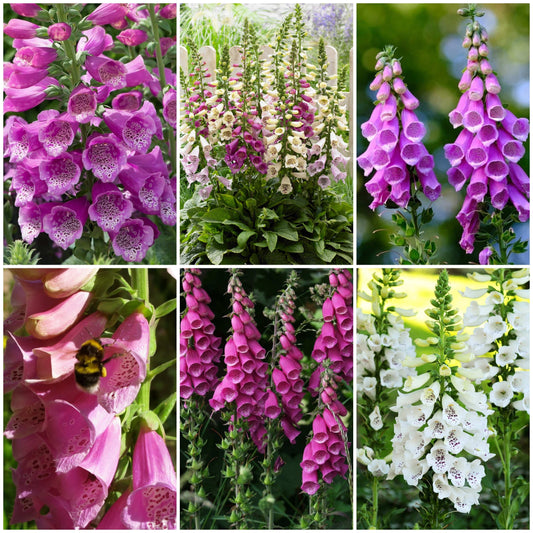How to Grow Foxgloves: Top Tips and Tricks
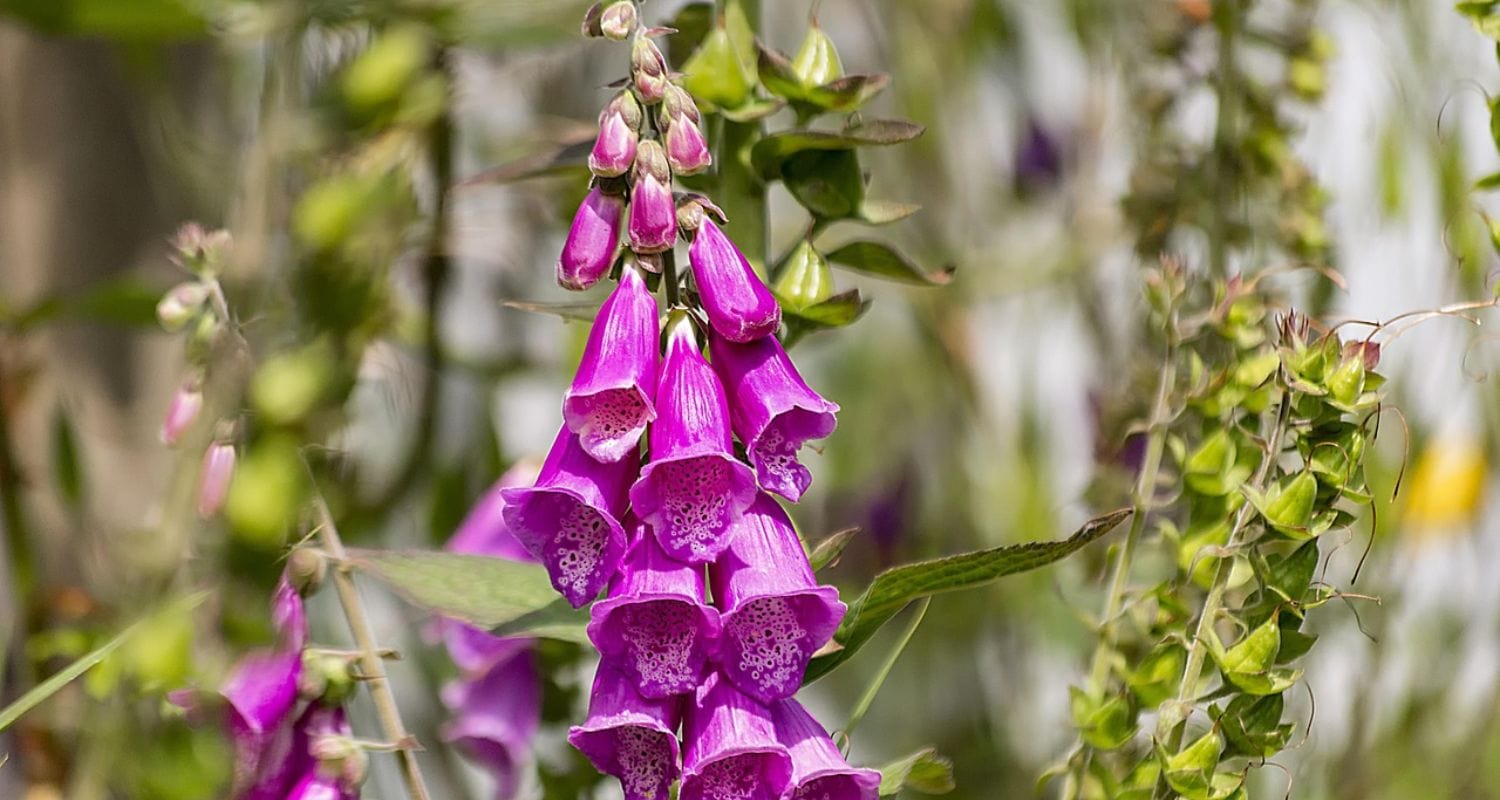
With their dainty bell-like blooms, conical shape and painterly hues, foxgloves (Digitalis) have been a cottage garden favourite for as long as there have been cottage gardens. And while the plant might also be synonymous with being toxic – digitalis poison was used to kill four of Agatha Christie’s characters – there’s no reason why you can’t have a glorious bed or border full-to-bursting with foxgloves, provided you’re careful. In this guide, we’ll walk you through how to grow these much beloved perennials, as well as precautions to take while doing so.
Jump to:
What conditions do foxgloves like?
Alongside our gardens, foxgloves are known for growing within woodlands, in hedgerows and heathland. They prefer moist but well-drained soil and partial or full shade, though they can also grow nicely in full sun provided you keep them well-watered. If your soil is on the heavy side, then you can work in some well-rotted manure or organic compost just to aerate it a bit. Likewise, if your soil is sandy, doing the same thing can help retain a bit more moisture.

Handling foxgloves
As alluded to in the introduction, foxgloves are toxic, so wear gloves whenever you’re dealing with them! That includes if you’re growing them from seed. In a similar vein, make sure to keep curious pets away from your foxgloves, as the last thing you want is your snack-hungry Labrador chowing down on the leaves and making himself sick. We’d recommend either fencing them off in a pet-free part of the garden or opting for something else (lupins and delphiniums offer a similar aesthetic).

Growing foxgloves
There are a few ways you can go about growing your own foxgloves, including growing from seed, purchasing and planting an established plant or taking cuttings from existing foxgloves in your garden, then propagating them into their own new plants. Let’s first look at growing foxgloves from seed.
Growing foxgloves from seed
Foxgloves are nice and easy to grow from seed; in late spring, scatter your foxglove seeds onto a tray of seed compost (go for peat-free if possible). Don’t bury your seeds, just press them lightly into the compost surface. Keep them outdoors in a sheltered position and you should see seedlings start to emerge within a few weeks. Once established into healthy young plantlings, you can pot your foxgloves on, before transitioning them to their final planting spot (late summer or early autumn is a good time for this).
Planting established foxgloves
The easiest way to plant foxgloves is to purchase an established potted plant that you can put straight into your flower bed. Opting for a plant in a 3L pot is our recommendation, wherever possible. These plants have really nicely-established root systems and provide instant impact, rather than having to wait for that early growth.
Dig a planting hole as deep as the pot in which your foxglove arrived, and roughly twice as wide. Place your plant in the hole, backfill the soil, then firm in the plant with your foot, taking care not to damage the plant’s crown (which should be at the same level as the rest of the bed). Give your plant a good initial watering and mulch with well-rotted manure or compost (this helps suppress weeds and retain moisture).
Propagating foxgloves using cuttings
If you already have some foxgloves growing in your garden, then you can get some more for free by taking basal cuttings and potting them on. With a sharp sterilised blade, look for strong young sideshoots that seem particularly vigorous. Cut these off where they meet the main plant stem, then plant them in a seed and cutting compost. Keep them somewhere sheltered like a coldframe, and water your cuttings regularly.
Ongoing care for foxgloves
You’ve planted your foxgloves. Brilliant. Now it’s time to make sure they keep looking their best.
Watering
Newly-planted foxgloves should be regularly watered throughout their first growing season, and in particularly hot, dry spells. If you’re growing your foxglove in a pot, then this will need more regular watering than those grown in the open ground.
Feeding
While foxgloves don’t typically need any additional feeding, if your soil is particularly poor or infertile, then you might want to consider an annual application of general, slow-release fertiliser in spring, just to give your plant a bit of a boost.
Pruning
Once your foxglove plants have finished flowering for the year, it’s worth cutting the stems all the way down to the base. This might seem a bit drastic, but it will help retain the plant’s energy, rather than diverting it into seed production. In doing so, you’re extending your plant’s lifespan. If you don’t mind a shorter-lived plant, however, then you can leave your foxglove and allow it to self-seed, which will result in new young plants.

Final thoughts
As evocative as they come, foxgloves deserve a starring role in any cottage or woodland garden. Plant alongside other shady favourites like ferns, hostas and heucheras, and if you want a bit more floral colour, then opt for the fluffy flowers of astilbe. While you’re here, why not check out our guide to shade-loving plants?
Last updated: 30/05/2025
